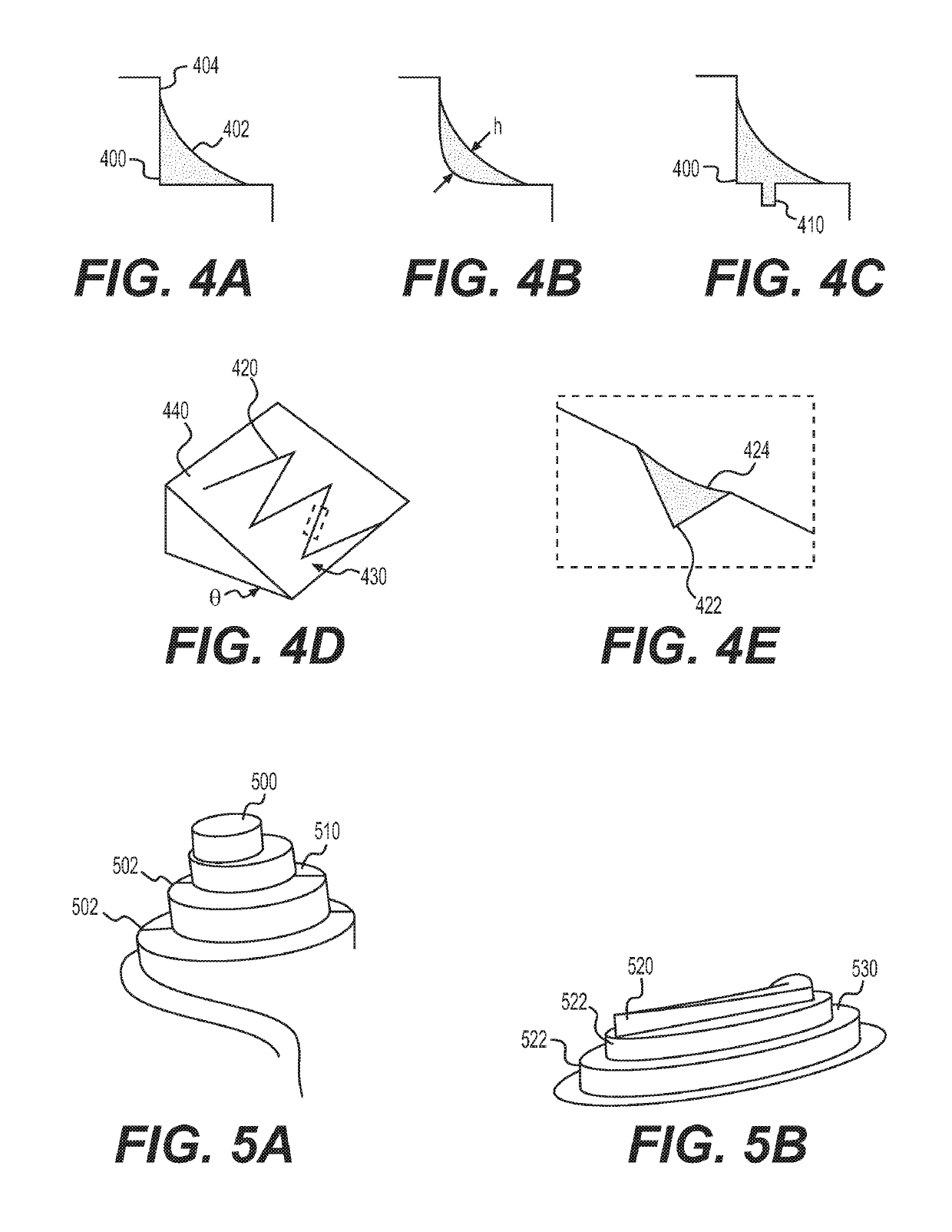Organ-on-chip platforms with reduced fluid volume
a technology of organs and chips, applied in the field of microfluidic devices, can solve the problems of ending experiments, unable to accept viable drugs, limited translation of animal models to human physiology, etc., and achieve the effect of effectively sealing or attaching scaffolds and being easy to install
- Summary
- Abstract
- Description
- Claims
- Application Information
AI Technical Summary
Benefits of technology
Problems solved by technology
Method used
Image
Examples
example 1
r Design and Testing—Conical SLA Resin Spiral and PSU Spiral Breadboards, and Conical and Elongated PSU Spiral Oxygenators as Revision 1 and Revision 2 Oxygenators
[0317]Materials, Methods, and Results
[0318]Designing an open-well system at very low volumes requires careful attention to surface tension effects, which can be difficult to predict by modeling alone. The design process relied heavily on quickly iterating prototypes and breadboard models to test individual components of the system.
[0319]The corner flow oxygenation concept was selected for implementation based on the anticipated performance relative to the requirements and anticipated development / manufacturing time as expressed in Table 1. Integration of the oxygenator into the platform itself with no crevices or interfaces requiring adhesive is a significant advantage for sterilization, cell compatibility, and usability.
[0320]Two surrogates were used in the process: (1) a 1% bovine serum albumin (BSA) solution in phosphate...
example 2
[0331]Materials and Methods
[0332]After further SLA validation of the wetting characteristics of an elongated spiral oxygenator without guidance channels, the revision 2 platform was machined from polysulfone (FIG. 3). This oxygenator was 4 mm in height, half the height of Rev 1 oxygenator (8 mm), and one fourth the height of the PSU spiral breadboard (16 mm). Each lane was surrounded by a barrier to prevent cross-contamination. The flat surfaces were sloped so as to empty to the end of the oxygenator, and the radius at the base of the barrier walls was large enough to prevent fluid accumulation.
[0333]To oxygenate the media through a free air-liquid interface while constraining the fluid path and limiting the volume that can collect in the oxygenator, a spiral oxygenator was developed that captured the fluid in the corner of a spiral cut into the hydrophilic polysulfone, as shown in FIG. 3. The corner served to limit the maximum thickness of fluid that oxygen must diffuse...
example 3
Oxygenator Performance
[0337]Materials and Methods
[0338]Analytical Modeling
[0339]An analytic modeling for predicting oxygenator performance and highlighting its dependence on various physical parameters was used as follows. The model was compared to measured data.
[0340]The performance of the oxygenator can be described by an efficiency φ, the oxygenation potential:
φ≡Cb-CaCsat-Ca,Equation2.2
where the oxygen concentration difference of inlet (Ca) and outlet (Cb) is normalized by the maximum possible oxygenation, that is when the outlet is at saturation Csat. This parameter allows comparison of oxygenators across experiments, where the input concentration is likely to vary, and is independent of cell oxygen consumption activity. Further, it can be directly measured with a probe each at the oxygenator inlet and outlet.
[0341]The analysis that follows expresses this oxygenation potential in terms of relevant parameters of the system: flow rate Q, diffusion depth h, air-liquid interface are...
PUM
 Login to View More
Login to View More Abstract
Description
Claims
Application Information
 Login to View More
Login to View More - R&D
- Intellectual Property
- Life Sciences
- Materials
- Tech Scout
- Unparalleled Data Quality
- Higher Quality Content
- 60% Fewer Hallucinations
Browse by: Latest US Patents, China's latest patents, Technical Efficacy Thesaurus, Application Domain, Technology Topic, Popular Technical Reports.
© 2025 PatSnap. All rights reserved.Legal|Privacy policy|Modern Slavery Act Transparency Statement|Sitemap|About US| Contact US: help@patsnap.com



